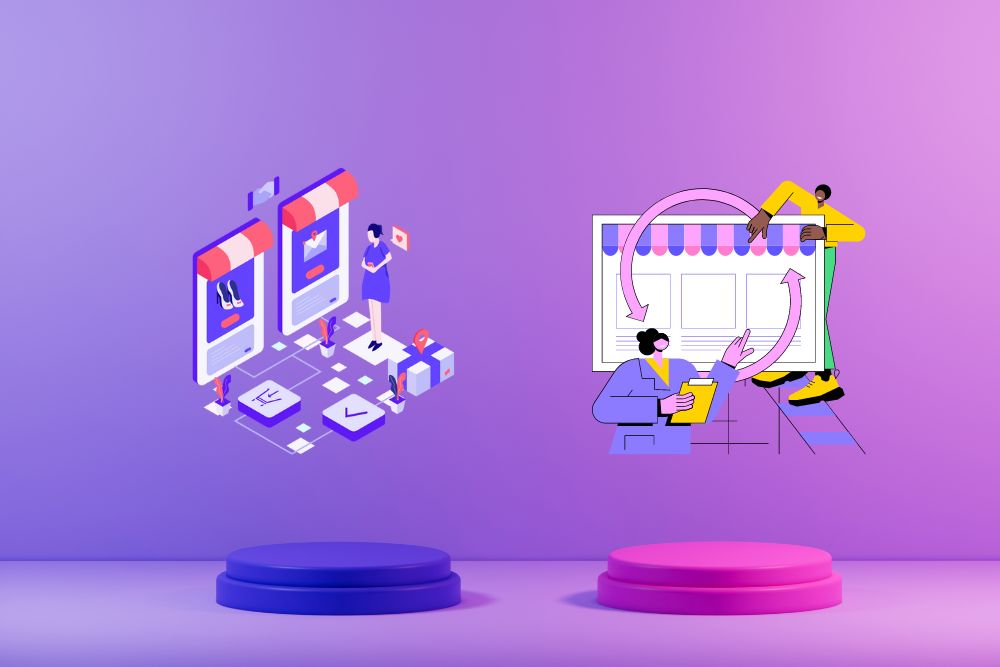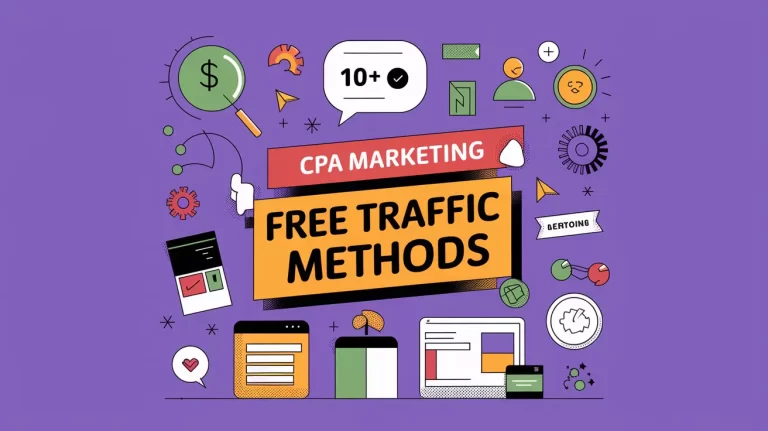Dropshipping Vs Drop Servicing – Dropshipping and drop servicing are both business models that involve outsourcing certain aspects of the sales process.
In dropshipping, a retailer partners with a supplier and sells products that the supplier keeps in stock. When a customer places an order, the retailer forwards the order to the supplier, who then ships the product directly to the customer. The retailer does not need to keep any inventory on hand and only pays the supplier for the products after they have been sold.
Drop servicing is similar to dropshipping, but instead of physical products, the retailer outsources the delivery of a service. For example, a web designer might offer website design services to customers, but outsource the actual design work to a team of freelancers. The designer would handle the sales and customer service, but the freelancers would do the actual work.
Table of Contents
Dropshipping Vs Drop Servicing | Which One is Better or Profitable?
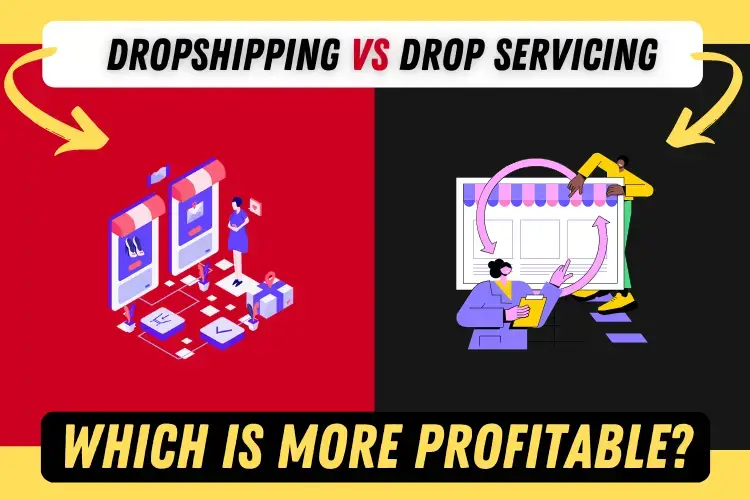
Both dropshipping and drop servicing can be a good way to start a business with low overhead costs and minimal risk, but each has its own set of challenges and considerations.
Let's see it in detail…
What is Dropshipping?
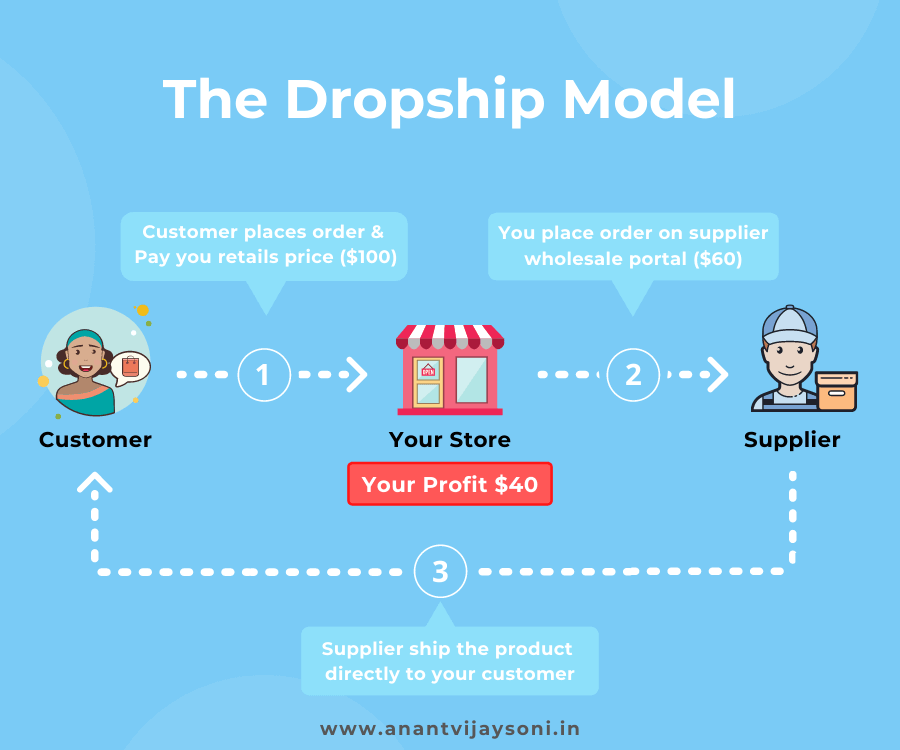
Dropshipping is a business model in which a retailer partners with a supplier to sell products that the supplier keeps in stock. When a customer places an order, the retailer forwards the order to the supplier, who then ships the product directly to the customer. The retailer does not need to keep any inventory on hand and only pays the supplier for the products after they have been sold.
Advantages of dropshipping include:
- Low startup costs: Because the retailer does not need to purchase inventory upfront, the startup costs for a dropshipping business can be relatively low.
- Flexibility in product offerings: A dropshipper can offer a wide range of products from multiple suppliers, which can make it easier to find profitable products and target specific niches.
- Scalability: A dropshipping business can be easily scaled up or down depending on demand.
Disadvantages of dropshipping include:
- Low profit margins: Because the retailer does not purchase the products directly from the supplier, the profit margins on dropshipped products can be relatively low.
- Lack of control over inventory and shipping: Because the supplier is responsible for shipping the products directly to the customer, the retailer has less control over the quality of the products and the speed of delivery.
- Dependence on suppliers: The success of a dropshipping business is heavily dependent on the reliability and integrity of the supplier. If the supplier is unreliable or goes out of business, the retailer's business may be negatively impacted.
In summary, dropshipping can be a good way to start a business with low overhead costs and minimal risk, but it also has its own set of challenges. It's important to carefully consider the advantages and disadvantages before starting a dropshipping business.
What is Drop servicing?
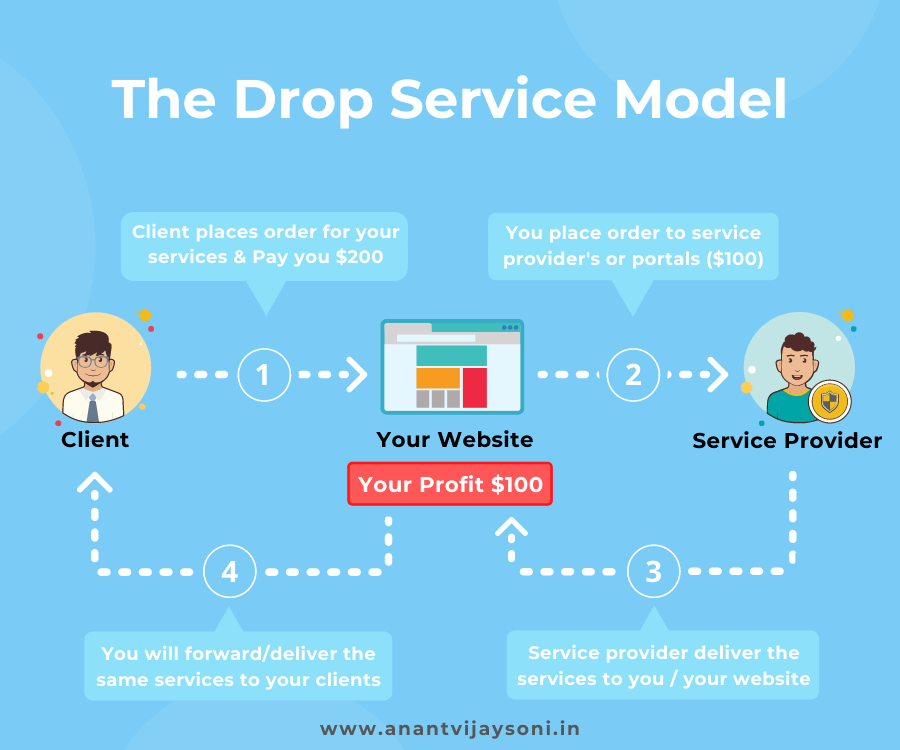
Drop servicing is a business model in which a service provider outsources the delivery of a service to a team of freelancers. The service provider handles the sales and customer service, but the freelancers do the actual work. This can include services such as web design, graphic design, content creation, and more.
Advantages of drop servicing include:
- Low startup costs: Similar to dropshipping, starting a drop servicing business can have relatively low startup costs as the service provider does not need to invest in equipment or inventory.
- Flexibility in service offerings: A drop service provider can offer a wide range of services to customers, which can make it easier to target specific niches or industries.
- Scalability: A drop servicing business can be easily scaled up or down depending on demand.
Disadvantages of drop servicing include:
- Lack of control over the quality of work: Because the freelancers are responsible for delivering the service, the service provider may have less control over the quality of the final product.
- Difficulty in finding and managing freelancers: Finding and managing a team of reliable freelancers can be a challenge, which can lead to delays or inconsistencies in the service delivery.
- Dependence on freelancers: The success of a drop servicing business is heavily dependent on the reliability and integrity of the freelancers. If a freelancer is unreliable or unresponsive, the service provider's business may be negatively impacted.
In summary, drop servicing can be a good way to start a business with minimal overhead costs and a low barrier to entry, but it also has its own set of challenges. Careful consideration of the advantages and disadvantages is important before starting a drop servicing business.
Minimum and maximum earnings in Dropshipping and Drop servicing
It's difficult to provide an average minimum and maximum earning for dropshipping and drop servicing, as there are many factors that can affect a business's earning potential, such as the products or services offered, the competition in the market, and the efficiency and effectiveness of the business's sales and marketing efforts.
However, it's important to note that both dropshipping and drop servicing can have relatively low profit margins, especially when compared to traditional brick-and-mortar businesses. This is because the retailer or service provider does not purchase the products or services directly from the supplier or freelancer and therefore doesn't get the volume discounts that a larger business would.
In dropshipping, profit margins can vary widely depending on the products you are selling and the cost of the goods you purchase. Some products may have a markup of 10-20%, while others can be as high as 50-100%. On average a good profit margin is around 25-30%.
In drop servicing, profit margins can also vary widely depending on the services offered, the competition in the market, and the price the service provider charges for the service. Some providers may charge as little as $20 per hour, while others may charge $100 or more. The profit margin for drop servicing can be anywhere from 30-50% for some providers.
It's important to remember that both dropshipping and drop servicing are business models and like any business, the earning potential varies greatly depending on the effort put into the business, the niche you target, and your ability to market and sell your products and services effectively.
Dropshipping vs Drop servicing? Which is More Profitable?
It depends on your specific goals and circumstances. Both dropshipping and drop servicing can be viable business models, but they have some key differences that may make one more suitable for your particular situation.
Dropshipping may be a good option if you are interested in selling physical products and have a good understanding of what products are in demand and where to find reliable suppliers. It also allows for more flexibility in terms of product offerings, since you can sell a wide range of products from multiple suppliers. However, it can be challenging to find profitable products and reliable suppliers, and you may face intense competition from other dropshippers.
Drop servicing, on the other hand, may be a better option if you have a specific skill or expertise that you can offer as a service. This can be a good way to start a business with minimal overhead costs and a low barrier to entry. However, it can be difficult to find and manage a team of freelancers, and you may face competition from other service providers.
Ultimately, the best option for you will depend on your own strengths, resources, and goals. It's worth researching and carefully considering both before deciding which business model is best for you.

